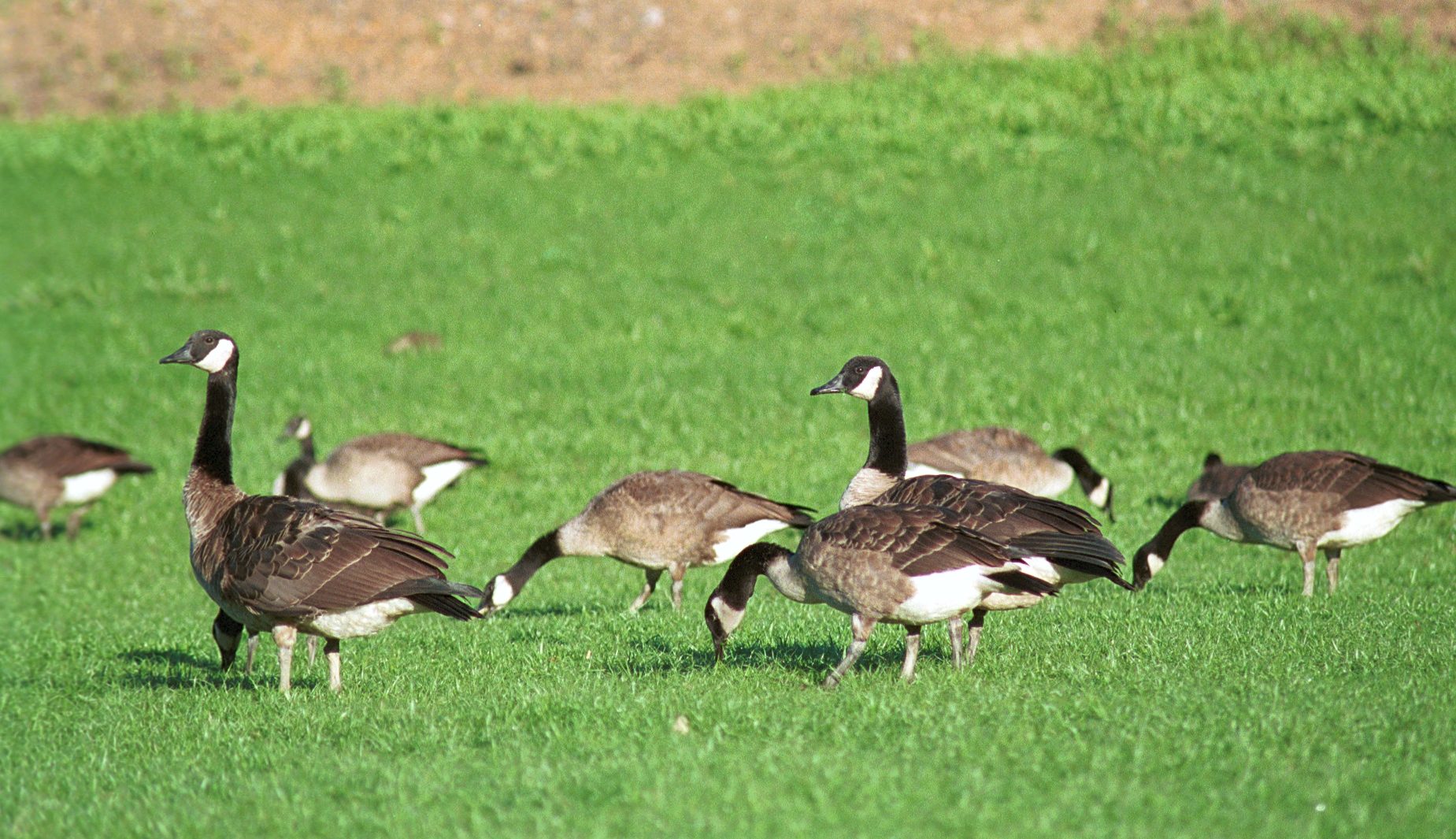Canada goose
Canada geese occur throughout North America. They have black heads with white cheeks and chinstrap, black neck, tan breast, and a brown back. Males and females look similar, but males are slightly larger. Canada geese prefer habitats near water, such as grassy areas and grain fields, where there is an unobstructed view of possible predators. Mowed lawns near water are ideal, so geese are especially attracted to large backyards, parks, golf courses, harvested crop fields, and airports. Canada geese eat grasses, other wild and cultivated green vegetation, and grains such as corn, rice, wheat, alfalfa, and soybeans. Geese mainly feed during the day, in early morning and late afternoon. The biggest problems caused by geese are from their feeding activities and accompanying excrement. Feeding flocks can strip vegetation from an area. Their feces can foul grass, sidewalks, and docks and contaminate water. Nesting geese are often aggressive toward people.
There is no "silver bullet" for the long-term removal of nuisance geese. Each situation is different and requires different strategies. There are several important aspects to consider in planning nuisance goose management: When does the problem occur? What time(s) of the year does the problem occur?
Non-lethal techniques can be effective, particularly if several different methods are used in concert, and at the appropriate time. However, except for habitat modification, most of the available non-lethal methods are only temporarily effective.
Canada goose
For more information regarding nuisance Canada geese in Delaware, please contact the Waterfowl, Turkey, and Upland Gamebird Biologist at 302-735-3600.
Injured/baby bird
If you have found an injured or orphaned baby bird you can contact Tri-state bird rescue at https://tristatebird.org/
Solutions for canada goose problems
Laws and regulations to be aware of
Federal regulations
|
||
While we attempt to provide guidance about state and federal regulations pertaining to specific species and control techniques, we do not provide information about local jurisdictions (city, town, county, etc.) where regulations may be more restrictive, especially as it applies to discharge of firearms, transport of animals or use of trapping equipment. Contact your local city or county government to inquire further. No guarantee is made that information (or lack of information) associated with a species or control technique is completely accurate or current. You should become familiar with federal, state and local laws before beginning any wildlife control activities. |




